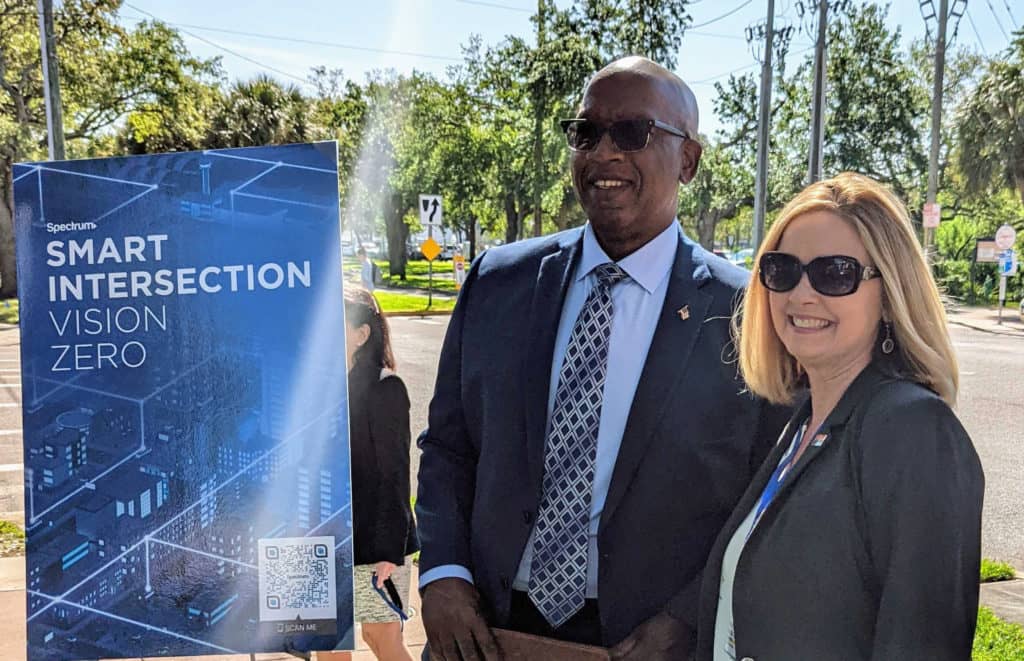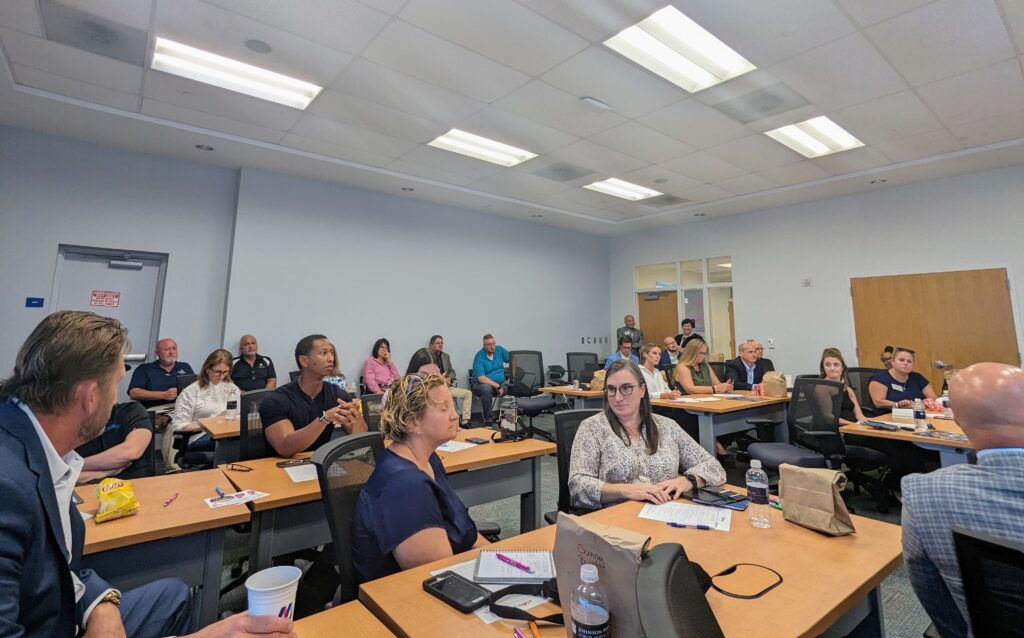Innovate
Local leaders work to create a smarter city

St. Petersburg is already a smart city – an urban area utilizing new technologies to improve quality of life, enhance infrastructure and support a more responsive municipal government.
Local leaders hope to build upon a burgeoning framework and collaboratively foster a smarter and more connected future. Over 40 business and municipal stakeholders gathered Wednesday at the Maritime and Defense Technology Hub to help them achieve that goal.
The St. Petersburg Chamber of Commerce partnered with the Innovation District to host “Building Tomorrow: A Smart Cities Community Conversation.” The two-hour event concluded with a brainstorming session that will help inform a Smart Cities Strategic Plan.
Scott Pickens, senior fellow at Northeastern University’s Global Resilience Institute, stressed the importance of eliminating silos. Many places, like St. Petersburg, have a technological foundation but lack the connectivity needed to flourish.
“Alignment is important – interoperability,” Pickens said. “Get some of these things to operate together.”

Scott Pickens is a senior fellow at Northeastern University’s Global Resilience Institute.
Pickens also chairs the Chamber’s Sustainability and Resilience Committee. He explained that tech-enabled traffic management, wayfinding, public safety and environmental monitoring systems form the bedrock of smart city applications.
More sophisticated initiatives encompass infrastructure, like the electric grid and wastewater systems. Pickens highlighted a list of cities with smart city comprehensive plans and noted St. Petersburg’s exclusion.
“That seems a little silly to us,” he said. “So, we’re trying to see if we can convince the city administration to help us get on the list.”
While most municipal officials will eventually implement smart city applications, those typically lack interconnectivity. Pickens said launching multiple systems simultaneously is financially unfeasible.
He said that underscores the need for a comprehensive plan informed by local priorities. Pickens also noted that data sharing is both critical to success and a privacy concern as smart city applications rely on ubiquitous sensors, including cameras.
“Those are issues we’re going to have to deal with as a city – what kind of controls do we want to put on data collection and sharing?” Pickens said. “Regional collaboration is another big issue. What are the opportunities for integrating some of what we might do with what they’re already doing – or what they might do in the future.”
Local leaders must also identify funding sources and a governing hierarchy. Those responsibilities could fall on the mayor, the city council or a citizen-led board.
Many of St. Petersburg’s current tech-propelled initiatives resulted from two key partnerships. The first is with U.S. Ignite, a Washington, D.C.-based nonprofit that awarded the Innovation District a smart city grant in 2019.
Alison Barlow, the District’s executive director, immediately enlisted Spectrum Enterprise to provide the technical insights to make the projects possible. She unveiled new smart Intersection and lighting systems to Mayor Ken Welch and then-Council Chair Gina Driscoll in March 2022.
“We listed a series of issues, challenges that we as community members felt like tech might be able to help solve,” Barlow said. Those also included air pollution sensors, augmented reality programs that teach kids marine science, the Digital Inclusion initiative and the SeeClickFix resident reporting application.

Mayor Ken Welch and St. Petersburg City Council Chair Gina Driscoll at the Innovation District’s Smart City Showcase in March 2022.
Rene Plasencia, lead account partner for IBM Consulting, explained the benefits of holistically creating a regional digital twin. His firm helped the Orlando Economic Partnership create a virtual overlay of Central Florida.
The impetus was determining the best uses for vast, developable land surrounding Orlando International Airport. Plasencia, a former state legislator, said its success hinged on merging various stakeholder silos and integrating data in an easily understandable way.
“It’s incredible in the age of technology – and we as a global technology company – that we find it so important to just sit in a room with people, talk and think things through, and write on a board what’s important and what we should do,” Plasencia said. “I want you to think about this not just as it pertains to a specific city – but all the partners that the cities have to work with.”
Christie Bruner, vice president of advocacy for the Chamber, separated attendee recommendations according to Mayor Ken Welch’s “Five Pillars for Progress.” Those include education and youth opportunities; equitable development, arts and business opportunities; neighborhood health and safety; housing opportunities for all; and environment, infrastructure and resilience.

Attendees included three city council candidates.
While many of the brainstorming suggestions already exist in some capacity, several participants expressed a need for expansion and increased awareness. Here are some highlights of what attendees would like to see in smarter St. Petersburg:
- Technology to inform zoning and parking restrictions
- Additional traffic monitoring systems and accessible data
- A regional transit network, with an emphasis on airport transportation
- City-owned video monitoring systems downtown and gunshot detection devices in problematic areas
- Additional water and air pollution monitoring systems and accessible data
- Artificial intelligence (AI) education in area schools
- An application that connects restaurants and grocery stores with excess food to nonprofits that feed the hungry







